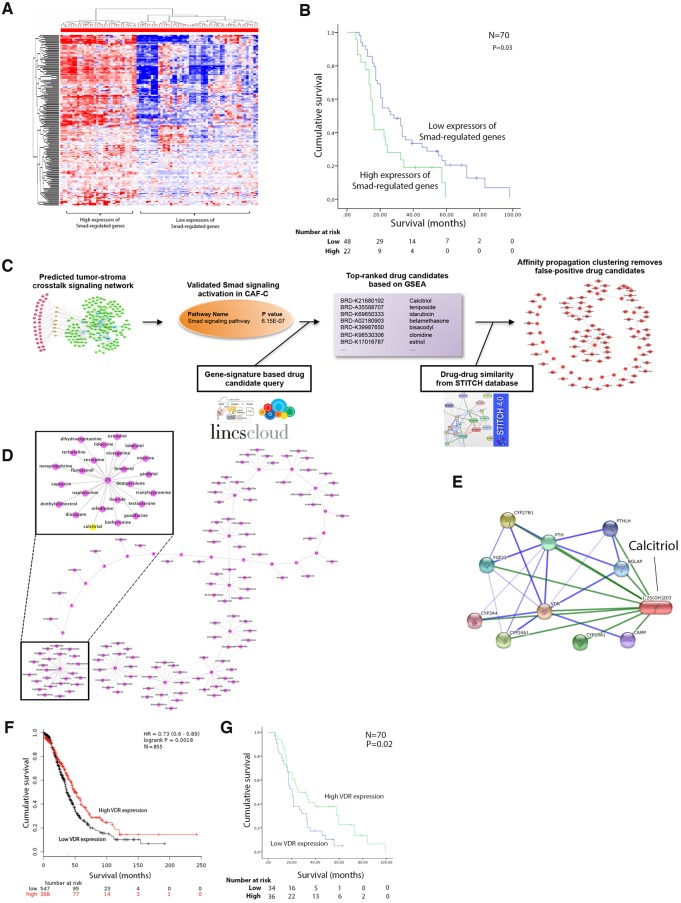Figure 4.
Identification of repositioned drugs that target activated Smad signaling in cancer-associated fibroblasts (CAFs). A) From the Ingenuity Pathway Analysis database, a list of Smad2-regulated and Smad3-regulated genes was generated. Hierarchical clustering was performed to stratify high-grade serous ovarian cancer (HGSOC) patients based on the expression levels of Smad-regulated genes. B) Kaplan-Meier analysis and log-rank test were performed to determine the prognostic significance of Smad-regulated gene expression by CAFs in HGSOC patients. C) The computational approach used to identify and repurpose known drugs to target activated Smad signaling networks in CAF-C-based gene set enrichment analysis and affinity propagation clustering. D) A list of US Food and Drug Administration–approved repositioned drugs that potentially target Smad signaling in CAFs was refined by filtering possible false-positive candidates through affinity propagation clustering. E) Network analysis on the binding of calcitriol to vitamin D receptor (VDR). F) The prognostic significance of VDR expression in CAFs was evaluated by Kaplan-Meier analysis and log-rank test using 855 GEO transcriptome profiles (P = .002). G) Similarly, the prognostic significance of VDR expression in CAFs was evaluated in the MD Anderson patient cohort (P = .02). CAF = cancer-associated fibroblast; VDR = vitamin D receptor.

